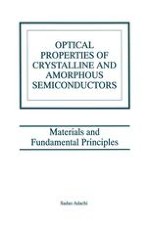1999 | Buch
Über dieses Buch
Optical Properties of Crystalline and Amorphous Semiconductors: Materials and Fundamental Principles presents an introduction to the fundamental optical properties of semiconductors. This book presents tutorial articles in the categories of materials and fundamental principles (Chapter 1), optical properties in the reststrahlen region (Chapter 2), those in the interband transition region (Chapters 3 and 4) and at or below the fundamental absorption edge (Chapter 5).
Optical Properties of Crystalline and Amorphous Semiconductors: Materials and Fundamental Principles is presented in a form which could serve to teach the underlying concepts of semiconductor optical properties and their implementation. This book is an invaluable resource for device engineers, solid-state physicists, material scientists and students specializing in the fields of semiconductor physics and device engineering.
Anzeige
